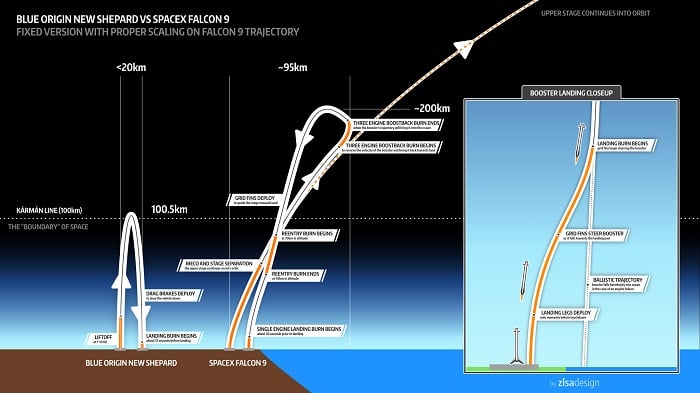How do SpaceX’s Falcon 9 rockets use sensor systems to land vertically?
SpaceX successfully launched and landed another Falcon 9 rocket on August 24th and have plenty more missions in the works.
The Falcon 9 rockets are reusable and can land the rockets, themselves, vertically. In fact, SpaceX celebrated the world’s first re-flight of an orbital class rocket back in March 2013. You can watch a Falcon 9 rocket successfully land in the video below.
How did they accomplish this vertical landing technology? And why is it so important for the future of space exploration?
SpaceX’s Design Philosophy
Space exploration is expensive. NASA mission costs can traditionally be measured in billions of dollars.
But SpaceX’s goal of making reusable rockets to drastically cut down the costs of space flight is coming to fruition.
“If one can figure out how to effectively reuse rockets just like airplanes, the cost of access to space will be reduced by as much as a factor of a hundred. A fully reusable vehicle has never been done before. That really is the fundamental breakthrough needed to revolutionize access to space.” -Elon Musk
The launch and landing trajectory of a Falcon 9 rocket. Diagram courtesy of zsladesign. Jon Ross, the site’s owner makes space flight infographics.
Impressively, SpaceX has delivered on many of their goals. What I find most interesting is that these advances weren’t accomplished by finding some new metal alloy or element to make a fuel compound from (like always happens in the movies). Instead, the Falcon 9 rockets rely on complex systems for things like fuel distribution and navigation through mechanical and electrical engineering. The development may not be sexy like a sci-fi movie, but SpaceX engineers are cutting the costs of space travel by tweaking and improving existing technologies.
The rocket engines that SpaceX has developed, like the Merlin rocket engines used in Falcon 9 rockets, have many aspects of their design built around reducing the overall number of points of failure that can cause rocket malfunctions to occur. These are things like electrical connections, joints in fuel lines, and points where separate capsules meet one another.
Although these systems are incredibly complex, it seems that SpaceX engineers’ ultimate goal is simplicity. As they say in electronics, a device can be fast, cheap, or dependable—but not all three. SpaceX has put their eggs in the “cheap” and “dependable” baskets.
How Do the Falcon 9 Rockets Land Vertically?
Obviously, SpaceX can’t give away all their secrets, but—between the information released by SpaceX and some work from internet sleuths—we can get a basic understanding of how these rockets do what was once thought to be impossible.
There is a system diagram for the Falcon 9 rockets that is being constantly updated to by enthusiasts online.

A section of the Falcon 9 system diagram (there are many more). A big thanks to /u/wclark07 on Reddit for putting these together.
You probably already know that the landing systems are automated, but it requires a lot of sensors in different compartments to make all of this happen. At a basic level, the rocket has gimbaled thrusters, which adjust the angle of the gimbal based on torque and the rocket’s center of gravity. Although gimballed thrusters have been around for a while, they have traditionally used for take off, not landing.
Before the gimballed thrusters come into place for landing, the rockets use Attitude Control Systems, which are a system of spouts that expel high-pressure gasses at different points around the capsule to reorient the rocket while in space so it can begin its descent with the thrusters facing downward.
It also uses grid fins, which are little flaps that deploy when the rocket is closer to its landing point, operating similar to the flaps on airplane wings. This, of course, requires a ton of math to be computed by the rocket’s systems based on the data collected from its sensors in order to release pressure, divert fuel, and open various flaps and chambers.
I counted 16 different sensor systems for things like AHARS, detaching modules, GPS, fuel pressure, inertia, and likely many more that can probably be flushed out as people make updates to the layout. I am by no means a rocket scientist, so please let us know in the comments if you would like to elaborate on the Falcon 9s’ sensors or electronic systems!
Featured image used courtesy of SpaceX.







No comments:
Post a Comment